The Role of Motle Clothing in Skateboarding Culture
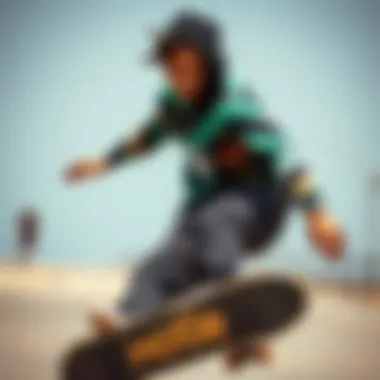
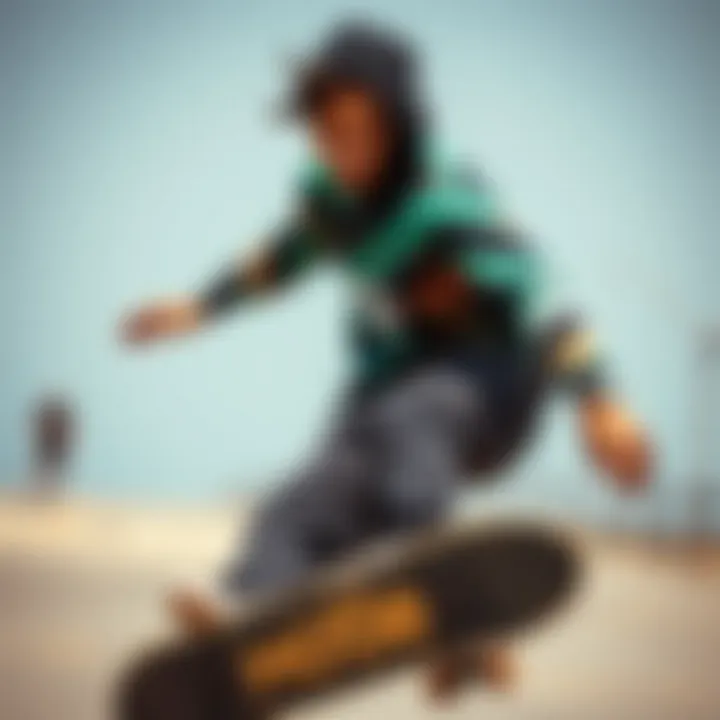
Intro
Skateboarding isn’t just a sport; it's a way of life, with a flair for style that’s hard to match. To delve into this culture is often to understand the nuances that make it vibrant and unique. Enter motle clothing, a term that resonates deeply within the skateboarding scene. These garments blend both form and function, creating outfits that not only reflect personal identity but also enhance performance on the board.
Motle clothing has evolved, shaped by skate culture’s shifts, trends, and the ever-present demand for functionality. For skateboarders, what they wear often speaks volumes about their style and their community. In this article, we journey through the significance of motle clothing, exploring its history, its role in helping skaters showcase their personal flair, and its contribution to cultivating a community based on shared passions.
The essence of motle clothing lies in its practicality. When skateboarders hit the parks, they're not just there to show off tricks; they're telling a story through every piece they own. The garments enhance movement, allowing skaters to push their limits. From the baggy pants that grant full range of motion, to the breathable tees that keep them cool, every piece has a purpose.
We'll look into specific styles popular among skaters, discuss how the right gear can influence performance, and showcase stories from the front lines of skate culture. More than a fleeting trend, motle clothing plays a pivotal role in building a community where individuality meets shared experience.
Join us as we kick off this exploration of motle clothing in the skating scene, examining its relevance in today’s fast-paced world.
Understanding Motle Clothing
Understanding motle clothing is pivotal in appreciating its intricate role within skateboarding culture. It’s not merely about aesthetics; it's about functionality, identity, and community connection. This section lays the groundwork for comprehending how motle clothing evolves alongside skaters, providing insights that are beneficial to skateboarders, instructors, and retailers alike.
Definition and Characteristics
Motle clothing typically reflects a blend of vibrant designs and cultural motifs that resonate deeply with skateboarders. Although definitions may vary, the essence of motle clothing often channels influences from streetwear, artistry, and individual expression. These garments usually exhibit characteristics like:
- Bold Colors: Bright shades and patterns often define motle clothing, enhancing visibility and flair on the streets.
- Unique Styles: The designs are not just about looking good; they're intentional statements that often tie back to personal stories or subcultures within skateboarding.
- Comfort and Fit: Tailored to accommodate movement, these clothes allow skaters to perform tricks without hinderance.
- Durability: Crafted from tough fabrics, motle clothing withstands wear and tear from the skateboard, aligning with the practical needs of skaters.
Such characteristics serve a dual purpose: they allow for expressive individuality while also meeting the functional requirements of the sport. Hence, motle clothing becomes a canvas for manifestation in the skateboard scene.
Historical Context
To truly grasp motle clothing, one must look back at its historical roots. The evolution of this style did not crop up overnight; it has branched from various points in skate and street culture. After the 1970s, when skateboarding first emerged as a notable activity, skaters sought garments that not only reflected their lifestyle but also catered to their demanding physical engagements.
The rise of skate brands such as Thrasher and Santa Cruz around the late ‘80s laid the foundation for what motle clothing would become. These brands introduced designs that captured the rebellious spirit of skate culture, influencing how skateboarders identified themselves. As the 1990s unfolded, the influence of hip-hop and punk genres started to bleed into skater fashion, further shaping motle clothing with even more eclectic or avant-garde designs.
Today, understanding the historical context of motle clothing offers a lens through which we can appreciate modern expressions and styles within skateboarding. It reveals not only the aesthetic paths skaters have traversed but also the resilience and adaptability of the culture itself.
The Role of Motle Clothing in Skate Culture
In the vibrant world of skateboarding, motle clothing plays a critical role beyond mere aesthetics. It's not just what skaters wear; it’s a reflection of their values, attitudes, and community ties. The blending of function, form, and identity cultivates a unique culture that resonates deeply with both skaters and enthusiasts. Understanding this role allows one to appreciate the nuances of motle clothing in the skate scene.
Fashion Statements Among Skaters
The relationship between skaters and their clothing choices speaks volumes. When skaters select motle apparel, they often do so as a form of self-expression and a bold statement. Each piece - from oversized tees to distinct graphic prints - tells a story. Brands like Supreme and Baker are not merely labels; they embody a lifestyle that skaters align with.
However, the significance of motle fashion is not solely about brand prestige. It’s about standing out in a crowd, capturing the skate ethos, and embracing individuality. Skaters often cycle through different styles shaped by their local scenes. For instance, one might see a blend of vintage aesthetics with contemporary styles that bind generations of skaters together.
Consider this: a skater in a baggy hoodie and distressed jeans isn’t merely slapping on what’s closest but rather choosing to honor an aesthetic that resonates with the culture’s rebellious roots. Moreover, the communal aspects of skate fashion foster connections; sharing clothing tips or influences can act as icebreakers in social settings.
Influence on Skateboarding Identity
Clothing in the skate culture does more than dress the body; it shapes identity. Skaters often use motle clothing as armor against the expectations imposed by mainstream society. They carve out their paths, and their attire becomes a crucial part of that journey. It’s about belonging to a tribe that doesn’t conform to the traditional fashion norms.
The styles adopted by skaters can signal various subcultures within the larger skate community. For instance, a transition from the punk-inspired fits of the 80s to the more minimalist styles seen today illustrates an evolving identity. Each era brings with it shifts in ideology, and skaters adapt their wardrobes to reflect these changes while maintaining a connection to their roots.
Furthermore, notable skaters like Tony Hawk or Nyjah Huston have leveraged their influence, showcasing how clothing encapsulates not just personal style but a broader narrative. Their signature looks often inspire upcoming generations to see skateboarding as both a sport and a way of life.
"Fashion is about something that comes from within you." – Ralph Lauren
The growth of social media also amplifies this influence, allowing skaters to share and curate their style on platforms like Instagram or TikTok. A well-placed post can send ripples through the community, setting trends that echo far beyond local skate parks.
Functional Aspects of Motle Clothing
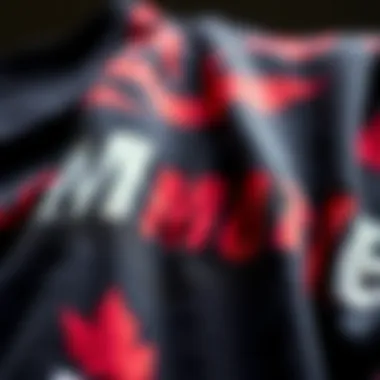
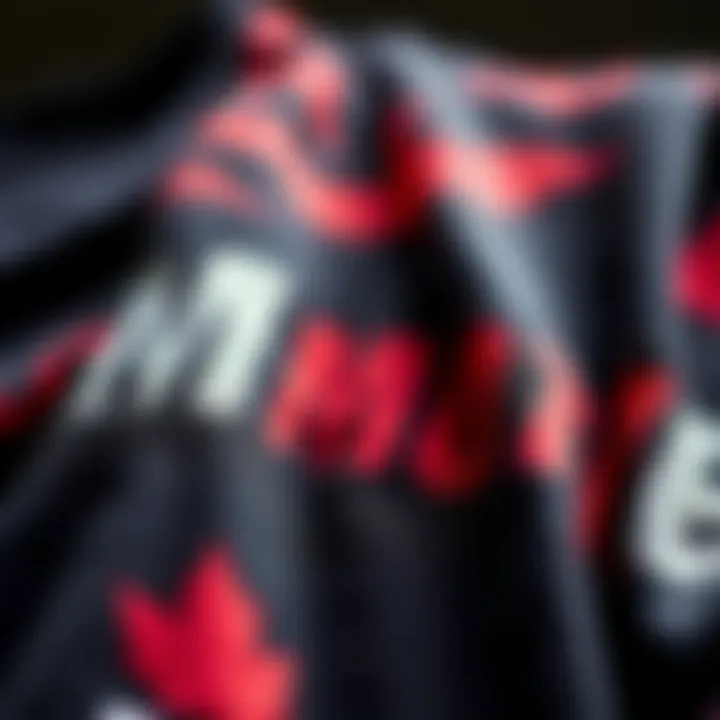
The importance of Functional Aspects of Motle Clothing cannot be overstated in the skateboarding scene. As skateboarders push the boundaries of tricks and style, the clothing they wear plays a critical role not only in aesthetics but also in enhancing performance. This section examines durabilty, breathability, and flexibility as key elements that contribute to the overall functionality of motle clothing.
Durability and Performance
When it comes to skateboarding, durability is king. Motle clothing is often crafted from materials that can withstand the wear and tear a skater experiences. Fabrics like Cordura or reinforced denim provide resistance against abrasions that come from falling, sliding, and grinding on various surfaces.
"The right gear can mean the difference between a perfect run and a bad day on the board."
This doesn't just include the fabric but also the stitching. Double-stitched seams and reinforced paneling are standards in many motle designs. This attention to durability doesn't sacrifice style either; brands often blend function with eye-catching designs.
Consider this: a pair of pants that rips easily under pressure not only leads to an embarrassing moment but can also hinder performance. Skaters need clothes that will hold their ground while allowing them to skate without worry.
Some of the standout brands focusing on durable skatewear include:
- Volcom
- The Hundreds
- Emerica
These brands are recognized for their long-lasting products that cater to the rugged lifestyle of skateboarders.
Breathability and Comfort
Breathability is crucial in motle clothing, particularly during long sessions in the sun. Skateboarders need to feel comfortable, and materials that wick away sweat and allow air circulation make a world of difference. A shirt that traps moisture can be a deal-breaker, leading to discomfort and potential chafing.
In many cases, brands employ Advanced Cooling Technology fabrics that are lightweight and soft against the skin. This tech helps to regulate body temperature so that when the tricks heat up, skaters remain cool. Simple design elements like mesh panels or vents in jackets also contribute positively.
These features echo the sentiment of comfort: when skaters wear clothing that feels good, they tend to focus more on their moves rather than their gear. Motivated by comfort, riders are more likely to express themselves through their style and tricks at the skatepark.
Movement and Flexibility
The agility required in skateboarding demands clothing that does not restrict movement. Motle clothing embraces this, often integrating features such as stretch fabrics that allow for fluid motion. Whether it’s a twist of the torso for a kickflip or a bend of the knees for a grind, the right kind of material can enable these movements seamlessly.
Wide-leg designs or tailored fits combined with spandex or elastane blends ensure that the clothing adapts rather than limits. For example, shorts with a loose fit but high functionality can mean the difference between landing a trick smoothly and failing to gain the needed momentum.
In essence, motle clothing mimics the freedom found in skateboarding itself. The connection between clothing and movement promotes not only better performance but also amplifies the skateboarder’s style. A well-fitted flannel or high-waisted pant can turn a basic outfit into an eye-catching display of individuality.
For more on how clothing affects sports performance, you might find these links helpful:
In summary, the functional aspects of motle clothing are essential in the skateboarding community. Durability ensures longevity, breathability offers comfort, and flexibility permits movement. Together, these elements create an ideal environment for skateboarders to express themselves while engaging in their favorite sport.
Motle Clothing as a Community Binder
Motle clothing serves as more than just a fashion statement within the skateboarding scene; it's a thread that stitches the fabric of the community together. This section aims to unravel the significance of motle clothing in fostering relationships, identity, and social connection among skateboarders. When members of a community don the same styles, they create a sense of belonging that goes beyond the individual.
Symbolism in Group Dynamics
In the world of skateboarding, clothing isn’t merely about aesthetics. It carries profound symbolism that reflects values, struggles, and aspirations of the skaters. Wearing a particular brand or style can denote group affiliation and solidarity. For instance, a skateboarder may wear oversized tees and loose-fitting pants, signaling a relaxed vibe and an intention to engage with a like-minded crowd. This can lead to unspoken rules within the skate community, where those dressed similarly are more likely to skate together.
The commonalities found in motle clothing create bonds as shared symbols. Much like a fraternity or a gang, skaters might recognize one another by what they wear. Some even adorn their outfits with patches or custom designs that speak to their personal journey and collective experiences on and off the board. Clothing thus becomes a canvas for storytelling and a medium for group dynamics, reinforcing a collective identity.
Events and Gatherings Focused on Fashion
Numerous skate events offer a platform for showcasing motle clothing, blending the worlds of sport and fashion into a vibrant tapestry of culture. Skateboard competitions, trade shows, and street fairs often have a heavy presence of motle brands. Here, skaters gather not only to showcase their skills but also to celebrate their styles. Events like the Vans US Open of Surfing or the Thrasher's Skater of the Year ceremonies highlight not just athletic prowess, but also trends in skatewear.
Moreover, informal gatherings at skate parks often transform into fashion showcases, where skaters come to hang out, share tips, and flaunt their latest sartorial selections. These gatherings foster an environment ripe for exchanging ideas about new styles and techniques in customizing motle clothing, thus keeping the community dynamic and ever-evolving.
To top it all off, social media and online platforms, like Reddit and Instagram, amplify these communal experiences. Skaters around the globe can share their outfits or even coordinate collective appearances at events.
In summary, motle clothing acts as a vital community binder by shaping group identity and facilitating social connections. It’s a source of pride, a gateway to inclusion, and a medium for expression. The blending of fashion with the collective spirit of skate culture results in a powerful communal experience that goes far beyond just being part of a sport; it defines a lifestyle.

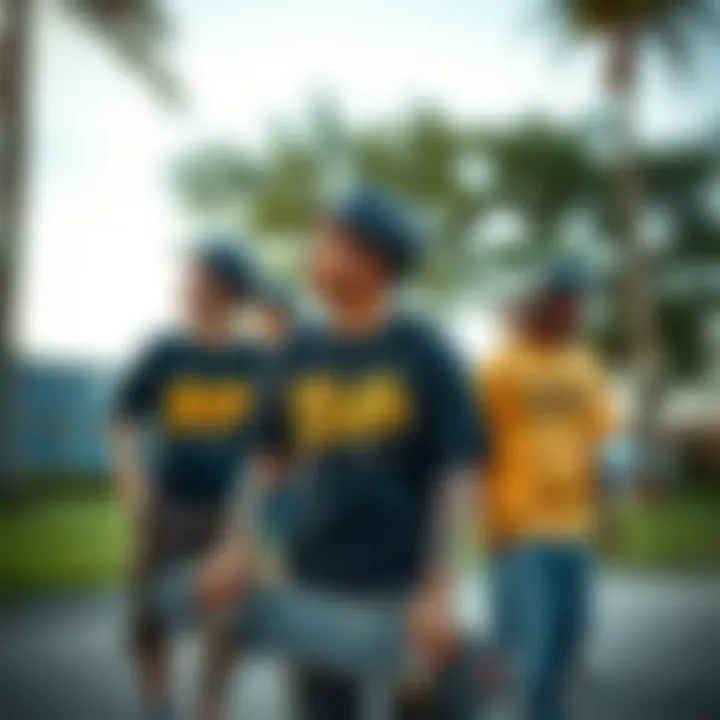
Key Brands and Trends in Motle Clothing
The landscape of motle clothing is not merely a fashion statement; it represents a culture deeply woven into the fabric of skateboarding. Key brands and trends shape the identity of skaters while also demonstrating functionality. In this section, we will explore the importance of these brands and trends, shedding light on their distinct elements, advantages, and the considerations involved.
Emerging Brands to Watch
In the ever-evolving world of motle clothing, freshly minted brands are sprouting up that blend innovative design with practical utility. Some standout contenders have begun to carve their niche:
- Apex skatewear: Known for its use of sustainable materials, Apex has made a name for itself among eco-conscious skaters. Its products champion both style and environmental responsibility.
- Vanguard Threads: This brand focuses on creating limited-edition pieces that appeal to skaters looking for exclusivity. Each collection tells a story, reflecting street art and skate culture in its designs.
- Firebrand Attire: Emerging fast, Firebrand is noteworthy for its mix of bold graphics and functional fabrics. Their commitment to performance suits skaters who demand durability on the board.
These brands are more than just clothing lines; they are a testament to the unique values of the skating community, such as individuality and environmental consciousness. Each new player often brings a fresh perspective, spurring established brands to innovate and adapt.
Timeless Trends vs. Modern Innovations
The fusion of timeless style and cutting-edge innovation is what makes motle clothing a curious study in contrasts. Skate fashion has roots that go back to the 1970s and 1980s, yet it continues to evolve. Here are some significant aspects to consider:
Timeless Trends:
- Baggy pants and oversized tees: These staples remain ever-popular, harking back to the days of thrashing in the streets. They offer comfort and freedom of movement, key for executing stunts.
- Graphic hoodies: From vintage logos to modern designs, these pieces uphold a classic vibe while providing warmth during late-night sessions.
Modern Innovations:
- Moisture-wicking fabrics: Brands now incorporate tech fabrics that help regulate temperature and sweat, ensuring skaters stay dry even during intense riding.
- Reversible jackets: Dual-purpose designs are great for those who want versatility without sacrificing style. Skaters can switch up their look on the go.
- Reflective elements: Safety and visibility are critical for night rides. Innovative designs now include reflective patterns, keeping skaters seen and safe after dark.
Understanding these trends not only informs purchasers but shapes the very essence of skater culture. The dynamic interplay between classic and contemporary keeps the fashion part of skateboarding fresh and relevant.
"Fashion moves in cycles. Today’s innovation might be tomorrow’s classic, but what matters most is the connection to the lifestyle, the streets, and each other."
By keeping an eye on the emerging brands and understanding the balance of timeless and modern elements, skaters can curate a wardrobe that speaks to their individual identity while remaining functional for their sport.
Sustainability in Motle Clothing
In recent years, the issue of sustainability has taken center stage not just in environmental discussions, but also within the fashion industry. For skateboarders, the clothing they wear doesn’t just serve a functional purpose but also reflects their values and lifestyle. Here, we will discuss why sustainability matters in motle clothing, delving into specific elements that underscore its importance, as well as benefits and considerations that skaters should keep in mind.
Environmental Impact of Skatewear Production
The production of motle clothing has significant environmental repercussions. From raw materials to manufacturing processes, the journey of creating skatewear leaves a footprint.
- Material Sourcing: Often, motle clothing is made from cotton and synthetic fibers, which require massive water usage and often come from unsustainable farming practices. For instance, the cotton industry alone is notorious for using pesticides that harm local ecosystems.
- Pollutants and Waste: The dyeing process used in creating vibrant, unique patterns is another environmental concern. Many chemicals released during this process can find their way into nearby water systems, affecting both wildlife and local communities.
- Overproduction and Fast Fashion: The rise of fast fashion means that many brands churn out clothing at a staggering rate, driven by trends that come and go. When skateboarders purchase these garments, they inadvertently contribute to a cycle of mass production and waste, as many of these clothes end up in landfills just months after purchase.
"Skateboarding reflects a culture of creativity and expression, and it's crucial that our clothing choices align with that ethos - which includes thinking about our planet."
The collective action of skaters opting for sustainable options can help reduce this impact. By supporting brands that prioritize environmentally-friendly practices, everyone has a tangible hand in preserving the environment.
Ethical Brands Making a Difference
In response to the above issues, some skateboard companies and brands have emerged, taking sustainable practices to heart. These brands serve not only skaters but also the environment.
- Thrasher Magazine: Known for its iconic logo, Thrasher has shifted to utilizing organic cotton in its tees, reflecting a commitment to more sustainable production methods.
- Plant-Based Apparel Lines: Brands such as Patagonia have introduced skate-friendly lines made from recycled materials, aiming to lessen the overall impact on the planet.
- Conscious Manufacturing Practices: Labels like Element have focused on fair labor practices as well as environmental considerations in their production, ensuring that workers are treated ethically while minimizing ecological harm.
- Direct-to-Consumer Model: Some newer brands, by skipping traditional retail channels, are able to reduce waste while offering unique, customized skatewear made from sustainable materials.
By choosing to partner with or support these ethical brands, skateboarders are breaking away from harmful patterns, such as the purchase of fast fashion items, and in turn, fostering a more environmentally conscious community.
As the conversation around sustainability in skate culture grows, it’s clear there’s room for both style and responsibility. Being mindful about the clothes skaters wear can pave the way for a more sustainable future in the sport.
Customizing Motle Clothing
Customizing motle clothing holds a unique significance in the skateboarding community. It’s not just about standing out; it’s about expressing individuality in a world where conformity can be the norm. Skaters across all levels have long recognized that their attire should reflect their style and personality. This customization can serve to not only enhance one's visual presence but also foster a sense of belonging to a larger community. With the fast-paced evolution of trends, personalized clothing is becoming essential for skateboarders who seek to showcase creativity and rebellious spirit.
Moreover, customizing motle clothing can also enhance performance. Tailoring your gear to fit your specific needs, whether that's adjusting the fit of your pants for greater comfort while skating or adding extra pockets for practicality, can make a tangible difference. This section will delve into DIY techniques and the influence of skate artists, offering insights into how skaters can create unique styles that resonate with their identity and values.


DIY Techniques for Unique Styles
In the realm of customizing motle clothing, DIY techniques have become a popular choice for skaters looking to add a personal touch to their gear. Here are some practical ideas:
- Patching: Adding patches is a straightforward method. Whether it’s a vintage logo or a self-designed emblem, patches can turn a simple tee or a worn-out jacket into a statement piece. You can sew or iron them on, allowing for both temporary and permanent customization.
- Painting and Stenciling: Custom paints and stencils provide endless possibilities. Using fabric paint, a skater could create patterns or images that illustrate their passions or experiences, placing an unmistakable mark on their clothing.
- Distressing: Distressed clothing can give off an effortlessly cool vibe. Techniques like fraying edges, cutting, and tearing accents can convey a worn-in look that is often seen in skate culture. Just remember, less can be more.
- Layering: Mixing and matching various layers can create a distinctive style. A funky overshirt on a simple graphic tee or layering different textures add depth to an outfit.
Customizing clothing isn't merely an aesthetic choice; it provides insights into the wearer's travels, influences, and choices. Skaters can transform ordinary pieces into stories they tell through their attire.
Influence of Skate Artists and Designers
The influence of skate artists and designers cannot be overstated when it comes to motle clothing. Many skateboarders also embrace the artistic side of their culture, often collaborating with local or well-known artists. This merging of art and fashion revolutionizes not only the appearance of skater wear but also promotes the culture that bolsters grassroots creativity.
For instance, artists like Ed Templeton often incorporate their unique styles into clothing lines, creating pieces that resonate deeply within the community. These collaborations frequently blur the lines between fashion and art, allowing skateboarders to wear more than just their representations of personal style—they wear a piece of the artist's narrative.
In addition, designers like Jason Dill often push the boundaries of skate fashion by introducing unexpected materials and formats. Their innovative approaches inspire skaters to think outside the box, encouraging them to adopt or adapt styles that reflect authentic self-expression. Whether through unique fabric selections or avant-garde designs, their contributions speak to the ever-evolving world of skateboarding attire.
The bottom line? Customizing motle clothing isn’t just an act of personalization; it’s also a collaborative journey that draws inspiration from the world around skaters.
“Fashion is temporary, but style is eternal. Making it your own is what matters most.”
Challenges Within the Motle Clothing Market
Navigating the complexities of the motle clothing market poses several challenges, which can significantly impact both consumers and brands in the skateboarding community. These challenges largely revolve around authenticity, brand loyalty, and the dynamic nature of consumer preferences.
Counterfeit Products and Brand Integrity
In a world where fast fashion thrives, counterfeit products have taken root, and the motle clothing market is not immune. These counterfeit goods do not just undermine the sales of legitimate brands; they also erode trust within the community. Skaters often wear their brands like a badge of honor, but when counterfeit items flood the market, it becomes difficult for enthusiasts to distinguish between authentic and fake gear.
Not only do counterfeit products lack the quality and durability that genuine brands promise, but they can also represent a significant financial loss for consumers who unknowingly purchase them. Consider this: an aspiring skater purchases what they believe to be a high-end shirt but ends up with a poorly manufactured knock-off. The disappointment does not merely stay with an ill-fitting shirt; it extends to a sense of betrayal against the brand they admired. With social media amplifying scrutiny, brands must continuously bolster their integrity and authenticity.
"A brand is much more than just a name; it’s an emblem of trust and quality for skaters. Counterfeits rip that apart."
Additionally, as skateboarders often form tight-knit circles, a rumored counterfeit incident can spread like wildfire, damaging a brand’s reputation almost overnight.
Market Saturation and Consumer Preferences
Market saturation presents another significant hurdle. With numerous brands vying for attention, distinguishing oneself can feel like shouting into the void. This saturation results in a confusing landscape for consumers, making decisions increasingly difficult. Skaters may waver between loyalty to their preferred brand and the allure of new, trendy alternatives. The ever-changing fashion landscape, influenced by social media and celebrity endorsements, intensifies this struggle.
At times, trends may push some brands to modify their offerings, leading to concerns over quality and authenticity. This trend-driven approach may invite fleeting popularity, but it often doesn’t resonate with the core values embraced by skate culture, such as durability and function. If a brand sacrifices quality for the sake of staying trendy, it risks losing the very customers who supported it from the beginning.
To navigate these challenges, brands need to engage with their communities genuinely. This can involve hosting events or collaborating with local artists and skaters, allowing for a fusion of creativity that keeps the brand fresh yet authentic. Building that rapport enhances consumer loyalty and helps brands maintain their foothold in an oversaturated market.
In summary, the motle clothing sector faces an uphill battle against counterfeit products and the challenges posed by market saturation. Addressing these issues requires a careful balance between maintaining brand integrity and adapting to changing consumer preferences.
Ending: The Future of Motle Clothing in Skateboarding
As we look ahead, it’s clear that the world of motle clothing is poised at a fascinating crossroads within the skateboarding community. The interplay of style, functionality, and social consciousness is likely to evolve, providing both challenges and opportunities for skaters, brands, and the culture itself. A deep dive into the future of motle clothing highlights several critical elements that will shape its path forward.
Potential Shifts in Trends
With the rapid evolution of environmental awareness, skaters might soon gravitate towards more sustainable choices in their fashion. Additionally, social media’s influence can’t be ignored; trends can bubble up overnight or become obsolete just as quickly. We may see an increase in bold prints and patterns reflecting individual skater’s personalities. Moreover, as younger generations step into skate culture, they’ll likely introduce their interpretations, merging motle clothing with streetwear aesthetics.
* Sustainable Practices: Expect brands to be more accountable, using recycled materials and eco-friendly production methods. * Cultural Fusion: Brands may start to borrow heavily from diverse cultural aesthetics, blending different styles into what we currently know as motle clothing. * Technology: Advances such as smart fabric might find their way into skatewear, enhancing performance and durability.
The direction motle clothing takes will depend on how effectively brands can tap into these emerging trends while remaining true to the essence of skate culture.
The Enduring Influence of Motle Clothing
Regardless of the changes on the horizon, the essence of motle clothing in skateboarding is unlikely to fade. These garments not only serve practical purposes but also act as a canvas for self-expression. They mirror the experiences, challenges, and victories of skateboarders.
The unique character of motle clothing ties directly into skateboarding’s rich history. The rebellious spirit and the camaraderie found in skateparks and streets worldwide foster a strong emotional connection. This bond goes deeper as skaters share their stories, often tied to the clothing they wear.
In summary, motle clothing will continue to play a pivotal role in shaping the identity of skateboarders. Its ability to adapt to societal changes while retaining core elements of individuality and community will ensure its relevance for years to come.
"Fashion isn’t just about what you’re wearing; it’s about how it connects you with a larger narrative."







